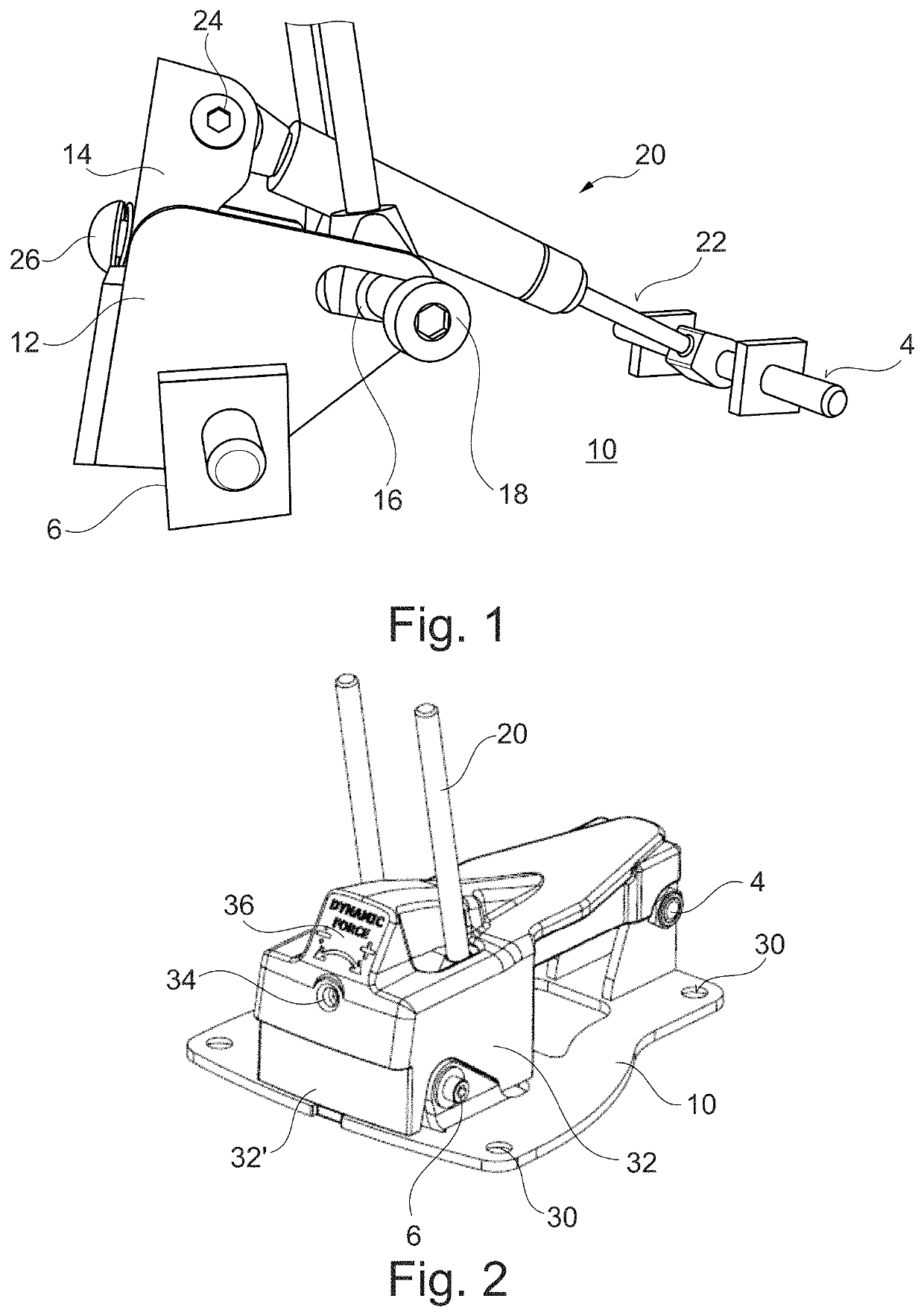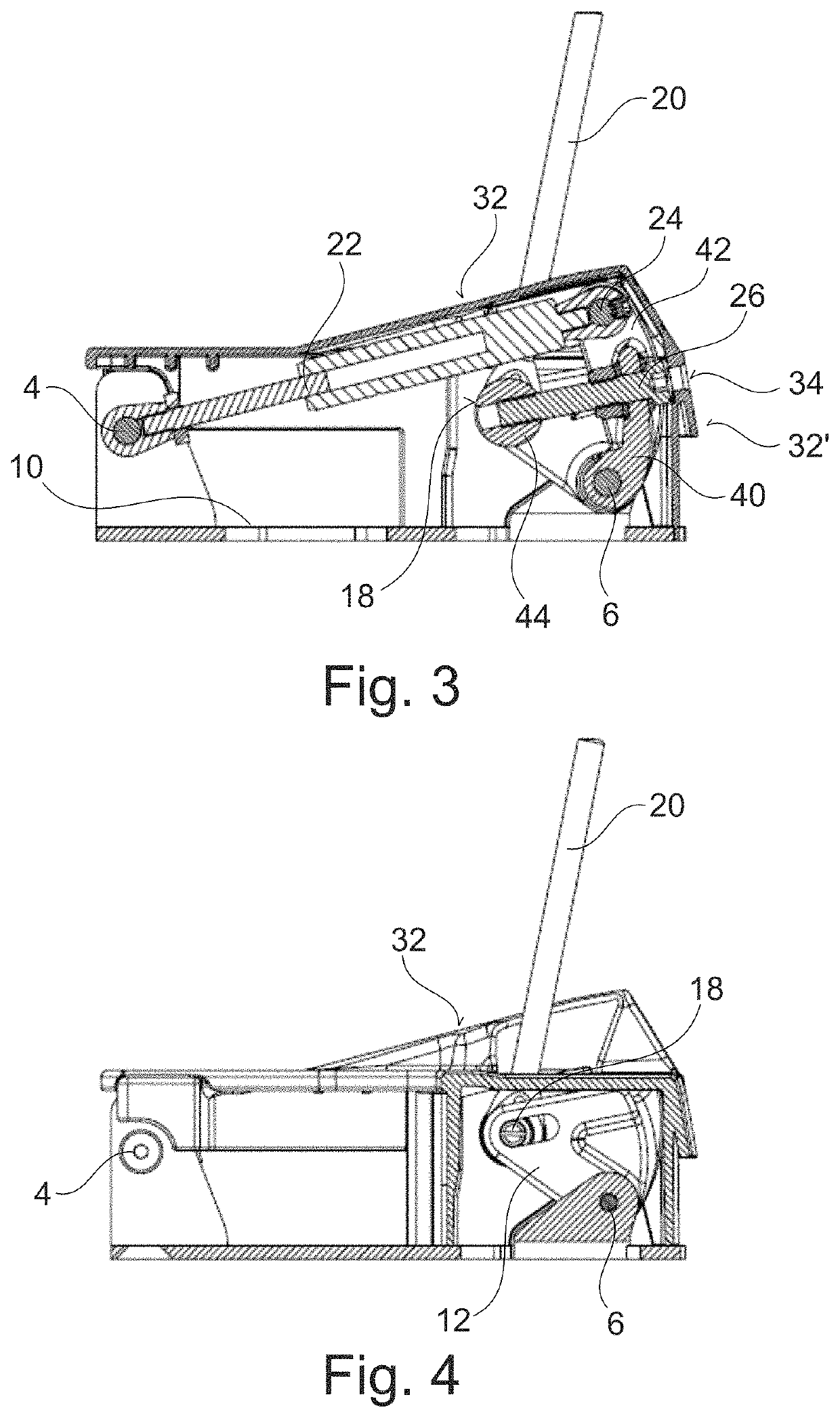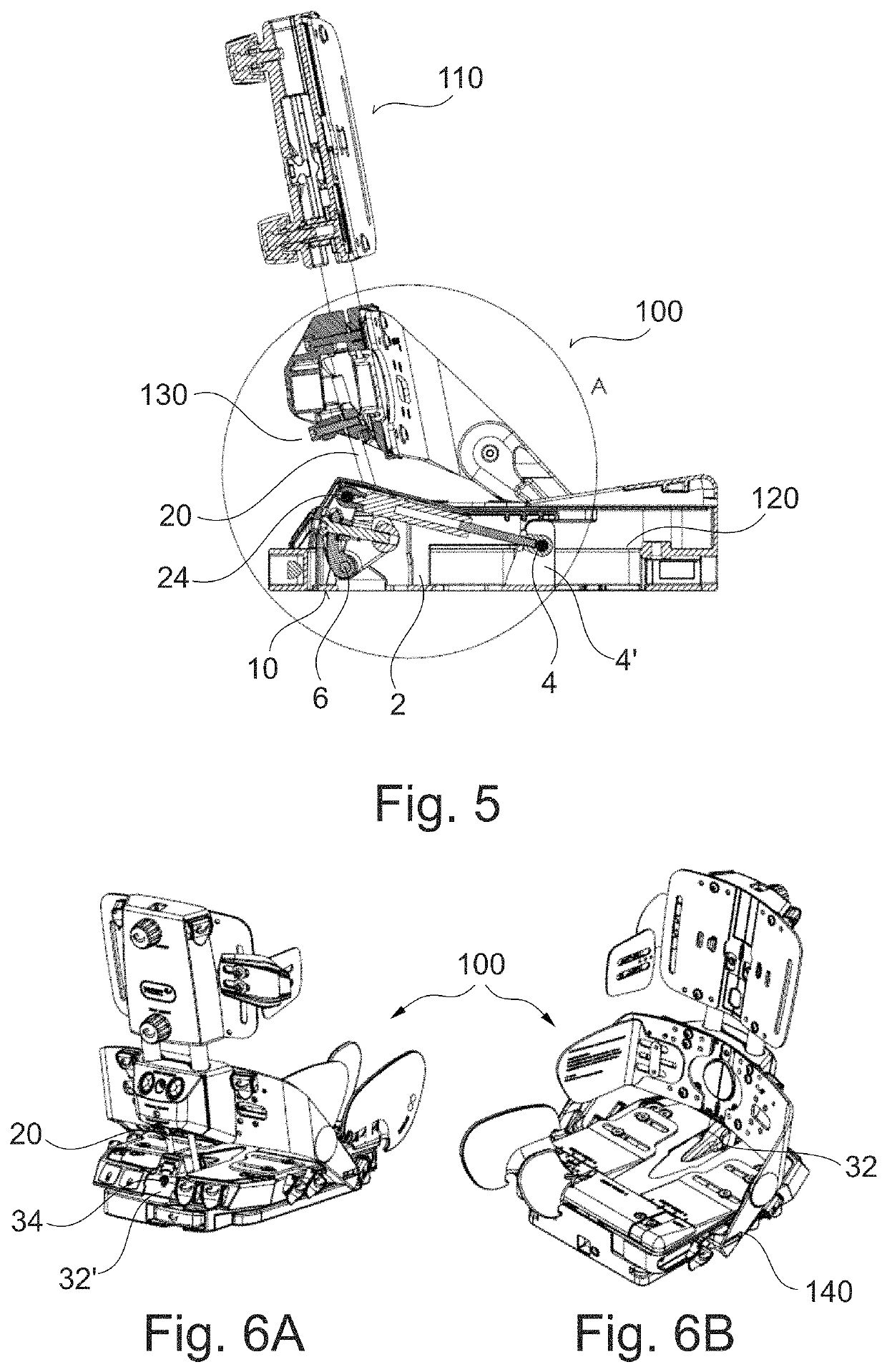Dynamic backrest construction
a backrest and dynamic technology, applied in the direction of seating furniture, stools,ambulance services, etc., can solve the problems of affecting the normal use of care personnel, and the size of gas springs that are only optimally suited, so as to achieve less viscosity
- Summary
- Abstract
- Description
- Claims
- Application Information
AI Technical Summary
Benefits of technology
Problems solved by technology
Method used
Image
Examples
Embodiment Construction
[0053]In FIG. 1 is illustrated the concept of the present invention. The mechanism 1 is arranged on a base 10. On the base is arranged two fastenings creating a first pivot point 4 and a second pivot point 6. The second pivot point is connected to a bracket 12 such that the bracket may pivot relative to the second pivot point and thereby to the base 10. In the bracket 12 is provided a sub-bracket 14 as well as an aperture 16. In the aperture 16 is provided a third pivot point 18. The third pivot point is connected to back-rest connection means 20 which in a first end is connected to the third pivot point and in an opposite end (not illustrated) is releasably and / or adjustably connected to a back-rest. Turning back to the sub-bracket 14, a fourth pivot point 24 is provided such that a resilient member 22 may be connected between the first pivot point 4 and the fourth pivot point 24.
[0054]The sub-bracket 14 is arranged in the bracket 12 such that it may slide whereby the distance betw...
PUM
 Login to View More
Login to View More Abstract
Description
Claims
Application Information
 Login to View More
Login to View More - R&D
- Intellectual Property
- Life Sciences
- Materials
- Tech Scout
- Unparalleled Data Quality
- Higher Quality Content
- 60% Fewer Hallucinations
Browse by: Latest US Patents, China's latest patents, Technical Efficacy Thesaurus, Application Domain, Technology Topic, Popular Technical Reports.
© 2025 PatSnap. All rights reserved.Legal|Privacy policy|Modern Slavery Act Transparency Statement|Sitemap|About US| Contact US: help@patsnap.com



